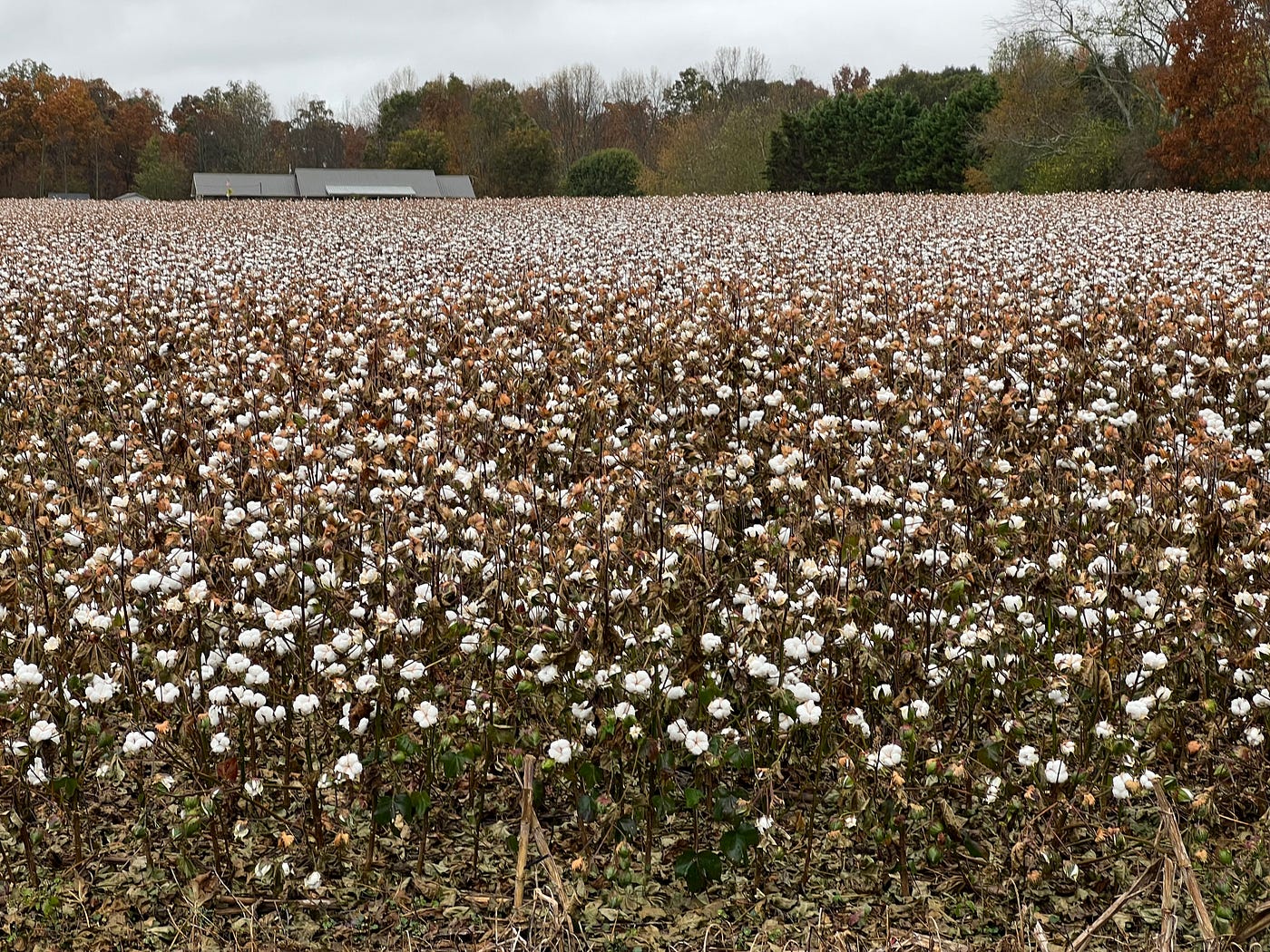Cotton is one of the most widespread, profitable nonfood crops in the world. The production of the crop alone employs just under 7% of developing nations’ workforce. With this type of bandwidth, it is no surprise that it supplies me and many others with our favorite garments, such as raw denim and vintage tees. What cotton can make is abundant, but the increased use of the crop itself has caused the earth some problems, earning it the prefix “dirty” crop. Some of the problems that make cotton so dirty are its water-intensive needs, pesticide and herbicide use, and GMOs. In today’s article, we are going to break down the specifics of each of these properties that make cotton “dirty.”
Water Intensive

Cotton is notorious for its high water consumption. Its water requirements vary depending on factors such as climate, soil type, and farming practices, but on average, it takes 10,000 – 20,000 liters of water to produce one kilogram of cotton —not a drastically large amount of cotton. Another perspective is that it takes 713 gallons of water to produce one cotton t-shirt—the equivalent of water needed to sustain one human life for two and a half years!
In regions where water resources are limited, like arid regions where cotton is commonly grown, cotton cultivation can exacerbate water scarcity issues. One of the most famous cases of this is the Aral sea. The once fourth largest inland body of water that had its streams diverted to supply water to cotton farms. In just 40 years, the sea has dried out to create a desert larger than Belgium, Netherlands, and Luxembourg combined.
Furthermore, excessive irrigation can also contribute to soil salinization. This is when water evaporates and leaves behind salts that can degrade soils and reduce crop yields over time.
Pesticide & Herbicide Use

Cotton farms rely heavily on pesticides to control pests such as bollworms, aphids, and whiteflies and diseases like Fusarium wilt and Verticillium wilt. Though cotton cultivation accounts for only 2.5% of farmland worldwide, it accounts for 16% of global insecticide use. Some of the common pesticides used for cotton are highly toxic for both pests and non-target organisms, including beneficial insects, birds, and mammals.
Herbicides are widely used in cotton farming to control weeds, which compete with cotton for plant nutrients, water, and sunlight. To combat this use, genetically modified cotton has been made to resist herbicides.
In this abundance, herbicide and pesticide use has caused many problems, including water runoff that contaminates adjacent farmlands, waterways, and habitats, posing a risk to non-target plants and animals, including humans.
Genetically Modified Cotton (GMOs)

Genetically modified cotton has been developed to build resistance to pests, herbicides, and diseases. It offers the potential benefits of increased yields, reduced pesticide use, and improved weed control.
However, the widespread adoption of genetically modified cotton has raised concerns over its cross-pollination with organic cotton, threatening its marketability and certification status. As genetically modified cotton has built-in defense systems against certain pests like bollworms, it doesn’t fair well against the other not-so-common pests of cotton. In places where they practically only use genetically modified cotton, like Northern China, secondary pest populations run rampant, leading to further pesticide use. The adoption of genetically modified cotton also gives into industrial agricultural practices, including monocropping and chemical-intensive farming, which can have harsh effects on soil health, ecosystem resilience, and biodiversity.
To Conclude
Cotton’s water intensiveness, herbicide use, pesticide use, and genetic modification are only a few pieces of the puzzle that make cotton so “dirty.” But it is important to note how big of an impact these three topics make on Earth.
As much as cotton may be dirty, it isn’t going anywhere. People’s livelihoods depend on it. People like me who love fashion depend on it. So, it is imperative to be conscious of how we consume cotton products. Research and look for key signs that show that the cotton product you purchased has been produced in an equitable and sustainable manner for the Earth and the people involved in its production, such as The Better Cotton logo and e3 Cotton.

